#The Adventures of Doc Savage
Explore tagged Tumblr posts
Text

Dream casting for an early 1960s Doc Savage television series.
11 notes
·
View notes
Text

August 1984. This won't change anyone's feelings about cult movie perennial THE ADVENTURES OF BUCKAROO BANZAI: ACROSS THE EIGHTH DIMENSION one way or the other, but if you're wondering what the hell the deal is supposed to be with Buckaroo Banzai and his team, the answer is, "It's an obvious pastiche of the pulp hero Doc Savage."
Launched in 1933, Doc Savage was one of the leading adventure heroes of the pulp magazines. Doc (whose full name was Clark Savage Jr.) was scientifically trained from childhood to the peak of human perfection, singularly adept in everything from mechanical engineering to medicine to martial arts. He had a secret headquarters called the Fortress of Solitude and a whole array of specially designed vehicles and equipment, but he was also a public figure, with offices in the Empire State Building. Doc had a team of eccentric, highly specialized aides — Monk Mayfair, Ham Brooks, Renny Renwick, Long Tom Roberts, and Johnny Littlejohn — who each had a particular skill and a couple of distinctive personality traits (for instance, Monk was a skilled industrial chemist, but also an "ape-like" brute with a ferocious temper). They were sometimes aided by Doc's cousin, Pat Savage, who was almost as capable as Doc, although he tried to keep her out of the fray because she was (gasp) a girl.
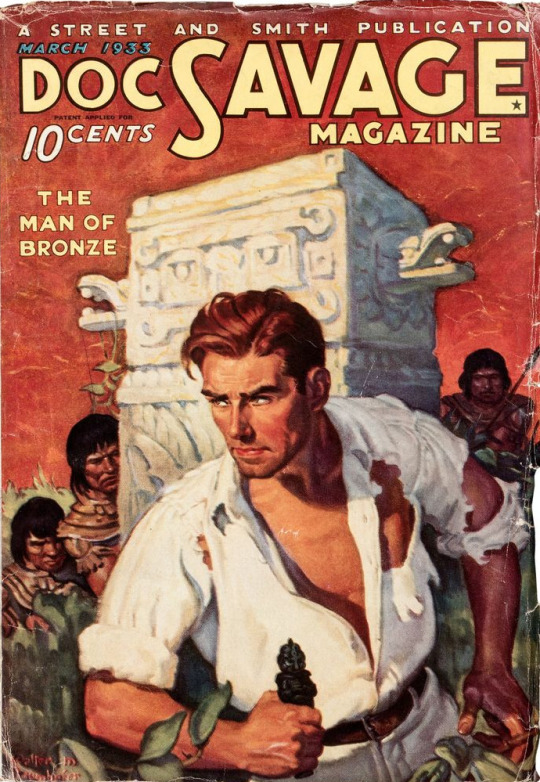
This was a fairly common pattern for pulp heroes. For instance, the pulp version of the Shadow (who was distinctly different from the radio incarnation) relied on a whole network of agents, some appearing only once or twice, some recurring across many of his published adventures. From a narrative standpoint, the agents and assistants had two principal purposes: The first was to offset the rather overpowered heroes — pulp heroes didn't necessarily have superhuman powers, but even those who didn't tended to be preternaturally skilled at nearly everything, so it was convenient to limit their direct involvement in an adventure to crucial moments, and let the assistants (who could be much more fallible) do much of the legwork. The second object was to beef up the characterization. Doc Savage was morally irreproachable as well as absurdly multi-talented, so there wasn't a lot to be done with him character-wise, while maintaining the mystique of a character like the Shadow required him to remain a fairly closed book.
Although the pulp heroes were a huge influence on early comic book superheroes like Superman and Batman, some of these conventions didn't translate well to other media: In a 13-page comic book story or half-hour radio episode, having too many characters was cumbersome (and expensive, where it meant hiring extra actors), and comic book readers normally expected to follow their four-color heroes quite closely, even before the breathless internal monologue became a genre staple. So, Superman inherited Doc Savage's Fortress of Solitude, but not his "Fabulous Five" assistants, while heroes like Batman and Captain America generally stuck with a single sidekick rather than a team of aides. Even the late Doc Savage pulp adventures (which ended in 1949) de-emphasized the assistants to keep the focus more on Doc himself. Ultimately, the pulp heroes didn't really have the right narrative center of gravity for visual media, which is why they've become relatively obscure, despite repeated revival attempts. The 1975 Doc Savage movie with Ron Ely, for instance, was a notorious commercial flop, and elements like Doc's childishly bickering assistants seemed odd and dated, even taking into account the film's nostalgia-bait '30s period setting.
What BUCKAROO BANZAI tried to do was to bring that old pulp hero formula into the modern era with a big infusion of '80s style and humor. Like Doc Savage, Buckaroo is a wildly gifted polymath (in the opening scenes, he rushes from performing brain surgery to test-driving his Jet Car through a mountain), so famous and important a personage that he puts the president of the United States on hold, and he surrounds himself with an array of brilliant, eccentric aides with silly nicknames who play in his rock band when they're not fighting crime or doing advanced scientific experiments.

Alas, judging by the poor box office returns, general audiences were no more amenable to the '80s version of this formula than they had been to DOC SAVAGE: MAN OF BRONZE nine years earlier, even with the 1984 film's extraordinary cast and memorably witty dialogue. Granted, even many of the movie's most diehard fans are baffled by the convoluted plot — a crucial expository scene where the leader of the Black Lectroids (Rosalind Cash) explains much of what's going on is nigh-incomprehensible without subtitles or closed captioning — but beyond that, THE ADVENTURES OF BUCKAROO BANZAI is essentially an extended riff on a particular slice of pop culture that had long since dropped out of the public consciousness, which is both part of its charm and also its commercial undoing, at least as mainstream entertainment.
(Also, if you're wondering, yes, the TOM STRONG series by Alan Moore and Chris Sprouse is also an obvious Doc Savage pastiche, although at least some of its plot and character concepts were probably retoolings of unused ideas from Moore's earlier Maximum Press/Awesome Comics SUPREME series, which was an extended pastiche of the pre-Crisis Superman.)
#movies#buckaroo banzai#the adventures of buckaroo banzai across the eighth dimension#w.d. richter#peter weller#jeff goldblum#clancy brown#doc savage#pulp heroes#street and smith#walter m baumhofer#the shadow#michael santoro#pepe serna#billy vera#lewis smith#one of the amusing things about the jeff goldblum character#is that his eccentricity clearly precedes his involvement with buckaroo banzai#he's just a brilliant neurosurgeon who's been looking for a chance#to wear his roy rogers outfit and fight crime
155 notes
·
View notes
Text

Bob Larkin, cover art for the reprint of "Doc Savage: The Three Wild Men"
#bob larkin#doc savage#pulp art#pulp heroes#pulp adventure#action adventure#mystery#mystery novel#pulp novel#adventure novel
10 notes
·
View notes
Text

Doc Savage: The Man of Bronze #1
#doc savage: the man of bronze#doc savage the man of bronze#doc savage#the man of bronze#pulps#adventure#dat rack#brian stelfreeze#millennium comics#comics#90s comics
17 notes
·
View notes
Text
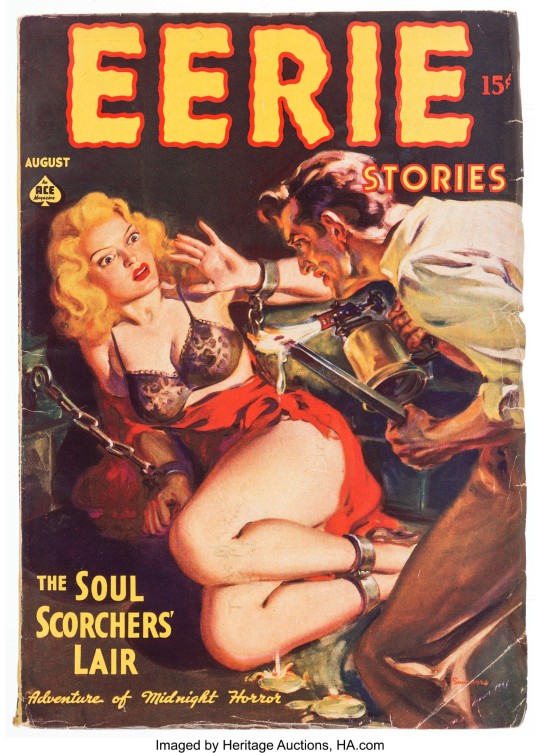
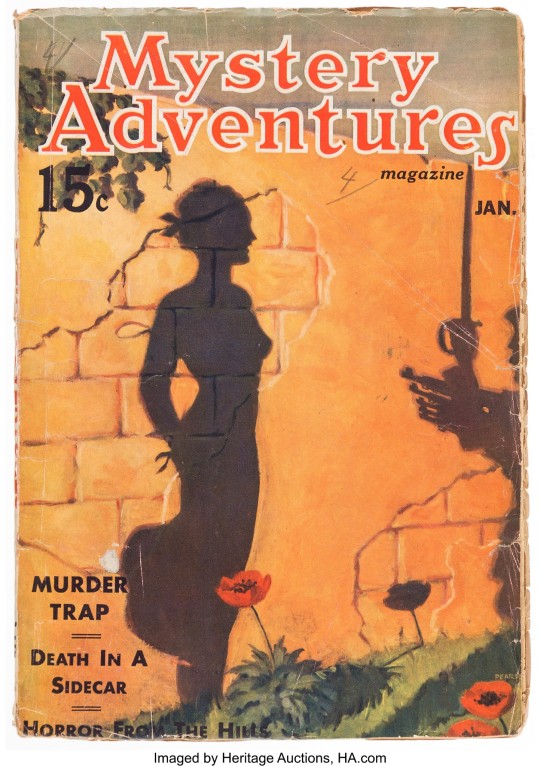
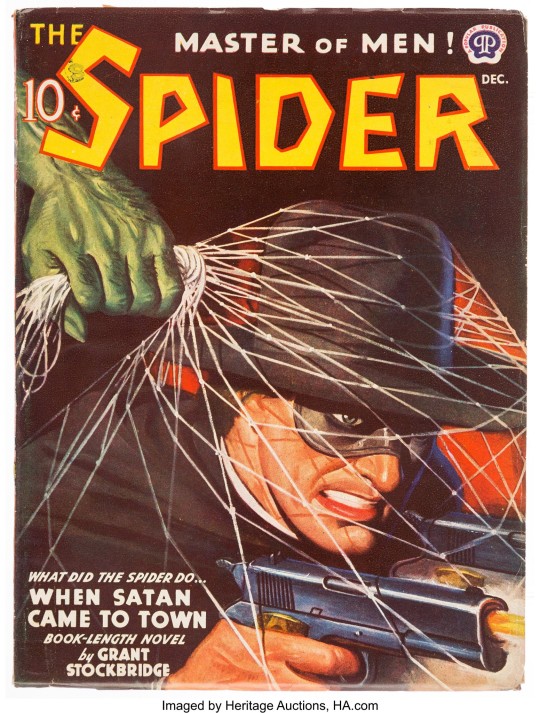
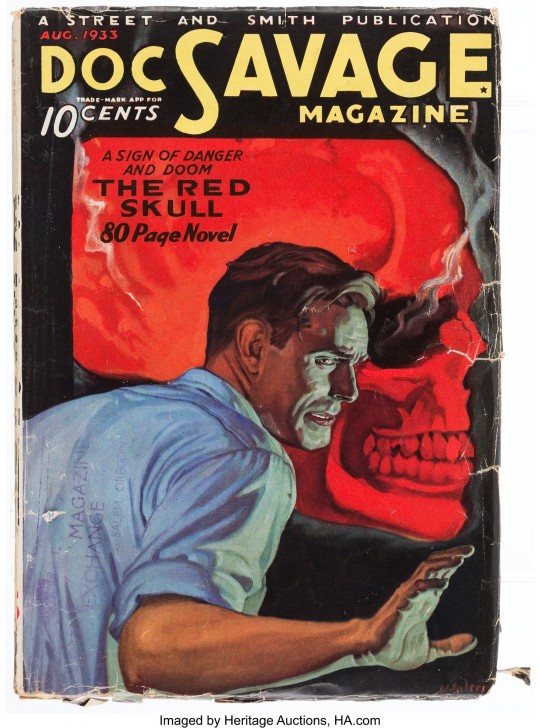
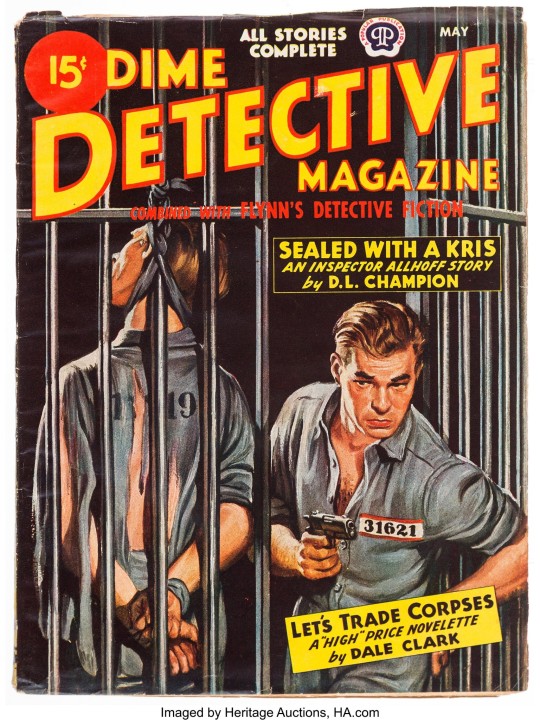
5 Random Pulps
#Pulp#5 Random#5 Random Pulps#Eerie Stories#Mystery Adventures#The Spider#Spider#Doc Savage#Dime Detective Magazine#Hero Pulps#Crime#Horror#Art#Pulp Art#Pulp Illustration
42 notes
·
View notes
Text

Doc Savage Comics v2 #4 June 1943
11 notes
·
View notes
Text
Doc Savage
For two generations of young readers — the original pulp fans of the 1930s and 40s followed by the reprint fans of the 1960s and 70s — Doc Savage remains not only an iconic figure but a template for all adventure heroes who came after.
Doc and his team — the ape-like chemist Monk Mayfair, his rival attorney Ham Brooks, construction engineer Renny Renwick, electrical engineer Long Tom Roberts, archeologist / geologist Johnny Littlejohn — inspired such diverse teams as Captain Future and his crew, the Challengers of the Unknown, the Fantastic Four, the crew of the Enterprise, Buckeroo Banzai’s Hong Kong Cavaliers (many of whom, we must be fair to observe, executed the formula fair more successfully than Doc and his crew), and Team Venture.
Doc also proved a direct inspiration (read “rip off”) of several key concepts later popularized by Superman, including “the man of bronze” vs “the man of steel” and first use of an arctic Fortress of Solitude for those times when he just needed a break from adventuring.
There have been radio serials, comic books, movies (one by producer George Pal, another by teen fans in the 1970s), and a heart-breaking number of announced but never made media projects, including a serial (eventually rewritten as Fighting Devil Dogs) and abortive TV projects (including a proposed animated series by Ruby-Spears that went so far afield of the original concept that it’s a blessing it got shelved after early development).
So what makes the character so fascinating?
He represents an ideal embodiment of the ultimate of humanity abilities. Unlike Superman (born or another planet) or other superheroes (either mutants or enhanced by some form of magic or super-science), Doc’s abilities are the result of his father’s relentless training regimen for him since birth. He’s a brilliant polymath in all sciences (a legit doctor with and MD plus a plethora of PhDs), a fluent linguist in virtually all languages including ancient Mayan and American Sign Language, a skilled mimic and disguise artist, an expert martial artist and judo master (this at a time when martial arts were virtually unknown in America), plus a pilot / sailing master as well as a world renown philanthropist.
The only thing he isn’t is genuinely human, and from the very beginning there’s an unspoken yet nonetheless present undercurrent in all his adventures that his frantic activity is pretty much a defense against admitting he really has no inner personal life.
Over the next several months (probably years) I’m going to recap the Doc Savage novels as re-published by Bantam Books in the 1960s. Their covers by James Bama probably did more to cement Doc’s iconic appeal than the stories themselves, creating the look that every succeeding interpretation has followed. While Bantam eventually reprinted all the original pulp stories, they didn’t do so in order of publication; I will add that to help you understand the development of the character and series.
© Buzz Dixon
2 notes
·
View notes
Text
Good god....parallels back to Doc Savage as original Jonas inspo..........
If Lloyd isn't Jonas' father but grandfather, then who the fuck is the kind of guy raised by Lloyd and then raises Jonas? Like bro?????????
#doc savage was raised as like the ultimate human/scientist/adventurer by his father and a team of scientists#latibulater
27 notes
·
View notes
Text
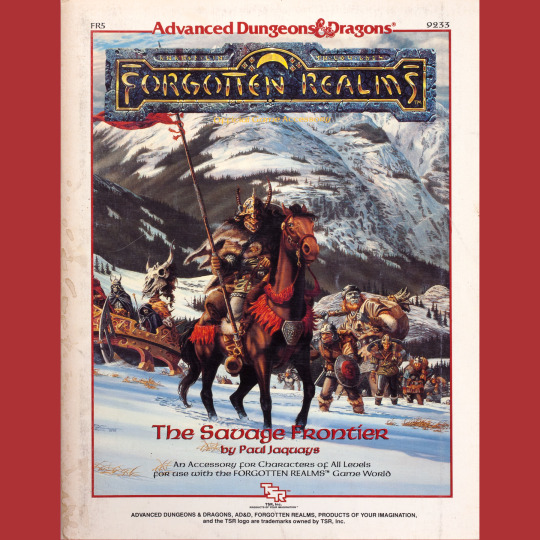
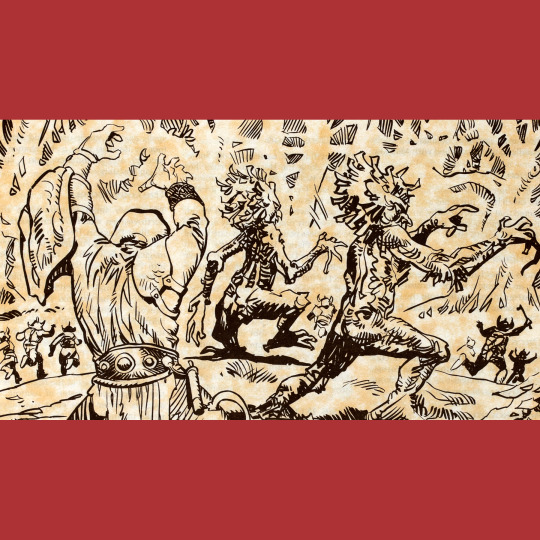


On Monday, remember how I said FR1: Waterdeep and the North is really just about Waterdeep? Well, FR5: The Savage Frontier (1988), released the following year, is basically the “and the North.” In form, though, it pairs with FR2: Moonshae as a pretty typical Gazeteer-style sourcebook, full of lore, notable locales and interesting inhabitants. Unlike that volume, this one contains explicit adventure hooks, which are a nice feature.
While a lot of the material here is derived from Greenwood’s notes, I think it is interesting that TSR trusted this book to a freelancer, even if that freelancer was RPG heavyweight Jennell Jaquays (who penned Dark Tower and Caverns of Thracia, and co-authored Griffin Mountain, among a pile of other important RPG books). FR5 covers all the major spots on the Sword Coast, probably the most visited region of the Realms — Icewind Dale (home of Drizzt), Mithril Hall, the Spine of the World, Luskan, Neverwinter, Hellgate Keep and more are profiled here pretty much for the first time (Icewind Dale, of course, had already debuted in R.A. Salvatore’s novel The Crystal Shard, though). I can’t help but wonder if the enduring appeal of these places is partly down to Jaquays’ influence.
There is some weird stuff, too. I noticed, probably because it was so fresh, that Doc from I12: The Egg of the Phoenix is hanging out here, despite that other module taking place in Greyhawk (you read that post way back in March, but I wrote it yesterday). I looked up Shannon Appelcline’s notes for the book on Drivethru and he has no explanation for this, but he does note that Jaquays also recycled Amelior Amanitas and Jingleshod the Iron Axeman from her excellent DragonQuest module The Enchanted Wood (1981), which I really should post about one of these days.
Great Larry Elmore cover with his trademark snow. What a bunch of weirdos, right? Skull guy and mage guy and blue guy and orc guy make quite the group. Interiors are by Esteban Maroto. They aren’t bad, but they seem undercooked — this is probably the first instance of underwhelming art in a Forgotten Realms book, but it sure won’t be the last.
86 notes
·
View notes
Text

Cartoon Heroes Paper Cut-Outs
Hank and Dean Venture
Created by Jackson Publick and Doc Hammer, The Venture Bros. is an action/comedy animated series chronicling the various misadventures of the Venture Family. The Venture clan is composed of Dr. Thaddeus ‘Rusty' Venture, a former boy adventurer who runs what remains of Venture Industries, a once-leading global corporation established by his super-scientist adventurer father Jonas; Rusty’s twin sons, Hank and Dean, and the family’s bodyguard, the super secret agent and trained killer, Bock Samson.

Hank and Dean often wind up in perilous situations, and (as revealed in the second season) have been killed over a dozen times, only to be replaced with exact clones who have no memory of their own deaths. The true origins of the brothers remained a mystery up until the series finale where it was revealed that Hank and Dean were created by via in-vitro fertilization, a combination of the genetic materials of Jonas Venture and actress Bobbi St. Simone; carried to term in an artificial womb attached to Rusty Venture (!).
Initially a parody of the Johnny Quest Show, the Venture Bros. would expand to lampoon all sorts of action and adventure icons, from Doc Savage, to the Fantastic Four, James Bond and G.I. Joe. A very silly yet smart show that was huge fun and offered up one of the greatest cartoon villains of all time: The Menacing Monarch!

Actors Chris McCulloch and Michael Sinterniklaas provided the voices for Hank and Dean Venture respectively. Venture Bros. debuted in February of 2003 and on Cartoon Network’s Adult Swim block. The series ran for seven seasons with a feature film finale.
Go Team Venture!
41 notes
·
View notes
Text
Athelind Long's Superhero Chronology
Cross-Published from my Blogspot blog, Kirby Dots & Ditko Ribbons. INTRODUCTION There's a tendency to divide the different eras of comic book superheroes into "Golden," "Silver", and "Modern," with occasional, tentative attempts to parcel off the Bronze Age, as well.
Let's just say that this lacks nuance. The Superhero Genre has gone through a lot of trends and phases and distinctive cultures over the years, and lumping almost half of its history into some concept of "The Modern Age" is just phoning it in.
Some notes:
This is not quite the same as the ages of COMICS, though there's similar nomenclature, largely because comics history tends to focus on the superhero genre even when it tries not to. This is about SUPERHEROES, in more than just a single medium; the "Ages" only indirectly impact other genres.
All dates are approximate.
There's plenty of overlap between Silver/Bronze, Bronze/Iron, and Iron/Aluminum, but when I started looking a keystone events, I was astonished by how neatly everything fell into 15-year chunks!
THE CHRONOLOGY
Prelude (1830s-1938): The dawn of mass-produced popular culture: penny dreadfuls, dime novels, pulp magazines, newspaper comic strips. Folk heroes and detectives start sharing the pages with costumed adventurers, some with peak-human or superhuman abilities. Professor Challenger, Sherlock Holmes, The Nyctalope, The Shadow, Doc Savage.
Golden Age (1938-1953): Begins with Superman, of course; ends with Post-War Superhero Implosion and Frederic Wertham's anti-comics crusade. The JSA stopped appearing in All-Star Comics in 1951. Fawcett stopped publishing Captain Marvel in 1953.
Interregnum (1950ish-1960ish): A lot of historians make much of the gap between the Golden and Silver Ages, but, in retrospect, it's surprisingly brief. Superheroes never really go away, but they are de-emphasized in favor of other genres in comics, including horror, romance, and science fiction. Even at DC, other than Superman, Batman, and Wonder Woman, superheroes are relegated to back-up stories in anthology titles. Still, The Adventures of Superman with George Reeves remained popular throughout this period.
Silver Age (1954-1970): The Reign of the Comics Code Authority (est. 1954). Really starts to roll with the demise of EC Comics and the reboot of The Flash; peaks with the "camp" craze popularized by the 1966 Batman TV series; ends when Kirby Moves to DC and Marvel publishes the Spider-Man Drug Stories without the Code Stamp. Early on, formerly-anonymous creators start getting openly credited on the title pages of their stories; this starts at Marvel, but DC eventually follows suit.
Bronze Age (1971-1985): Begins with O'Neil and Adams revamping Batman and Green Lantern; Ends with the Crisis on Infinite Earths. Both DC and Marvel start paying closer attention to continuity and "relevance", and the most successful titles are the ones that most fully embrace an ongoing serial storyline (Legion of Super-Heroes, X-Men, The New Teen Titans). The specialty comic book shop starts becoming more common at the beginning of the era, and the closing years of the era herald a growing Creator's Rights movement, the birth of the Direct Market -- and the dawn of the independent publishers.
Iron Age (1986-2000): Begins with Deconstruction: Elementals, The Dark Knight Returns, Watchmen, and the Wild Cards "mosaic novel" series. Ends with Reconstruction: Morrison's JLA, among others. Dominated by a determined effort to Take Superhero Comics Seriously. The Big Two kill off or "reinvent" goofy, campy Silver Age characters. DC tries very hard to bring coherency and consistency to its new, Post-Crisis timeline. Several independent publishers try cold-starting superhero "universes" of their own; most of them fail, but a lucky few manage to sell their characters to the Big Two (Ultraverse, Wildstorm).
Aluminum Age (2000-2015): When Everything is Recycled. Marvel starts the Ultimate Universe. DC resurrects Silver Age characters who got killed off in the Bronze and Iron Age. The Comics Code finally dies in 2011. DC does a succession of "sequels" to Crisis on Infinite Earths: Identity Crisis (2004), Infinite Crisis (2005-2006), and the deceptively-named Final Crisis (2008), culminating in another Hard Reboot with the New 52 in 2011. Marvel does its own version of Crisis with the Multiverse Incursion story arc in New Avengers from 2013-2015. "Decompression" and "writing for the trade" become common as trade-paperback collections become more economically important than the traditional monthly comic magazines ("floppies").
Digital Age (2015-Current): Superhero not only become mainstream, but actually dominate movies and TV for several years -- this starts in the Aluminum Age, with the MCU in 2008, but is solidly codified by the debut of Arrow in 2015 and an explosion of weekly prime-time superhero shows that lasts almost a decade.
Comments are welcome, but be civil! This is intended to provoke conversations, not fights.
#superheroes#chronology#golden age#silver age#bronze age#iron age#aluminum age#digital age#“modern age” is nonsense because what comes after it?
62 notes
·
View notes
Note
Did Jenkins actually do science or did he just kill things really good?
The original concept was that we wanted a guy who would've been the hero of his own comic book in a world that didn't already have Atomic Robo in it. And that became Jenkins.
So, Jenkins is a pulp hero, but not in the scientist adventurer mode of, say, Doc Savage. He's more of a big and relentless guy, like a Reacher or a Travis McGee, even though I hadn't even heard of either of those at the time. I suppose nature finds a way.
12 notes
·
View notes
Text

Doc Savage fighting a giant octopus by James Elliott Bama
#james elliott bama#doc savage#pulp illustration#pulp art#pulp magazine#doc savage magazine#adventure pulp#pulp adventure#he's holding his breath really well
15 notes
·
View notes
Text





5 Random Pulps
#Pulp#5 Random#5 Random Pulps#Dynamic Adventures#Double Action Detective#Doc Savage#Breezy Stories#Amazing Stories#Science Fiction#Crime#Hero Pulps#Vintage#Art
40 notes
·
View notes
Text

Doc Savage Comics #11 January 1943
11 notes
·
View notes
Text

The 1945 Doc Savage mystery, "The Wee Ones," was a ripped from the headlines case inspired by newspaper stories of the Mad Gasser of Mattoon, an unexplained series of gas attacks in Illinois where a masked mystery man blasted others with sprays from a gas gun.
Considered Illinois's answer to the Mothman, many psychologists now believe that the Mad Gasser was just a case of mass hysteria, no doubt fed by irresponsible Illinois police departments who attempted to calm people down, but instead gave statements like (direct quote) "a gas maniac is on the loose."

A well known symptom of schizophrenia are what are called "ray delusions," where schizophrenics believe some dark, malicious figure has a poisonous ray that goes through walls, causes sickness, or turns food rotten or milk sour. Being attacked by a mysterious gas gun wielding assailant is perfectly in line with schizophrenia ray delusions.
Unfortunately, the "Wee Ones" is seldom read because it is in the 1944-1945 era of Doc Savage, when Doc's semi-superhuman, large scale adventures with apocalyptic imagery and natural disasters were subdued and turned into more commonplace mystery thrillers.
71 notes
·
View notes